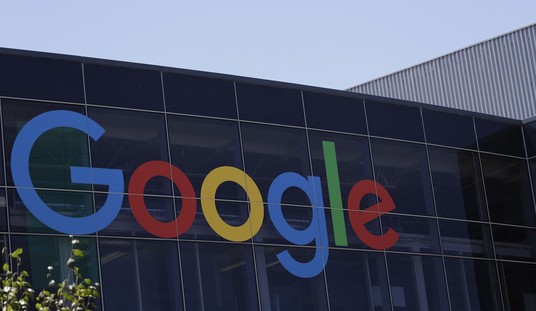October 14, 2012
Could there be something to the Hegelian dialectic, after all?
You remember what Marx saw in Hegel’s philosophy of history: thesis, antithesis, synthesis; rinse; repeat.
I think a lot of voters (particularly white voters) were hoping we had got as far along as the rinse cycle, what with the election of Barack Obama and all (racist America elects a BLACK man!), but I’ve got this hunch we’re not nearly so far down the dialectical slalom.
Racism is still with us — even official racism. It’s just taken a new form.
The old form was out-and-out enmity by whites of “coloreds,” particularly (but not exclusively) blacks. That ill will led to discrimination against minority folks, both in government and in private. At its worst, this discrimination was expressed in violence, with abridgments of life and liberty: Lynchings, and slavery, and Jim Crow laws. And the state-enforced separate public facilities, like bathrooms and water fountains. It was not merely ugly, it was grossly unjust.
Getting rid of this systematic racism was one of the great triumphs of the second half of the 20th century. Legally, the process peaked with 1964’s Civil Rights Act.
Unfortunately, an aspect of that legislation has grown into a new racial ugliness: compensatory, or “reverse,” discrimination.
If you are anywhere near as old as I am, you’ve been witnessing the dissipation of the old, direct form of racism all your life. We don’t see lynchings any more — save an occasional “high-tech lynching” of a Supreme Court nominee. Most violence directed against blacks, today, is not white-on-black violence, it’s black-on-black. That is horrible and sad, but it is not about race. Not directly, anyway.
Recommended
But our progress has not been a steady march onward. We, the American people, didn’t just stop being violent and starkly discriminatory in our lingering racial animus. The progress we’ve made came with a hitch. We weren’t allowed an Aristotelian negation of a vice. Instead, the old racism was fought with a new anti-racism.
Which is also racist.
When the Civil Rights Act was being written, voted on, and signed into law, there were prophets who warned that a few of its provisions would lead to racial quotas, to “reverse discrimination.” These prophets were pooh-poohed. And then, with the objections barely shrugged off, in came the reverse discrimination policies, the quotas, and even talk of racial reparations. The social sector in which these practices have remained most prominent and persistent has been the higher education industry. Right now, the Supreme Court is hearing yet another reverse discrimination case. All the old arguments have been rehashed, and not much new has been said, but the issue did get a tad weird when Justice Alito noted a policy at the University of Texas: of preferring the children of minority professionals over more-qualified, but poorer, non-minorities:
“I thought the whole purpose of affirmative action was to help the disadvantaged,” Alito said. He asked why a minority child of the “1 percent” should get a “leg up against, let’s say, an Asian or a white applicant whose parents are absolutely average in terms of education and income?”
State universities are allegedly all about equality of opportunity. Favoring the under-performing children of wealthy minority folks over better-qualified non-minorities (or non-favored minorities) doesn’t make sense. Once again, an allegedly “progressive” program has morphed from helping the poor to throwing money at rich folks.
What possible justification could there be for such a policy?
Ask President Obama.
Well, no. He’s running for re-election, and we can’t expect him to answer any question honestly.
Ask Barack Obama, c. 1994.
In the earliest recording we have of Mr. Obama, he reacts to the Murray and Herrnstein study, The Bell Curve — a book, last I checked, about the stratification of society based on IQ —Â by charging one of its co-authors, Charles Murray, with “pushing a very particular policy agenda, specifically the elimination of affirmative action and welfare programs aimed at the poor.”
With one finger out to the political wind, Mr. Murray has apparently decided that white America is ready for a return to good, old-fashioned racism — so long as it is artfully packaged and can admit for exceptions like Colin Powell.
As an interpretation of The Bell Curve, this seems off. Murray himself is quoted by The Daily Caller marshaling an adequate retort: “It must be the first documented case of Obama spouting off without doing his homework — he obviously hadn’t read The Bell Curve. . . . We’ve seen a lot of that in the last four years.”
But what interests me is not the proper exegesis of a tome nearly two decades old — though it is worth some thought as to why so few progressive critics of the book ever dare address its main contention. What interests me is that young Barack Obama could equate an alleged policy of opposing “affirmative action” (reverse discrimination) and welfare for the poor with “old-fashioned racism.”
Old-fashioned racism was not opposition to special, favorable attention to minorities. It was the promotion of unfavorable attention to minorities.
Old-fashioned racism flowered in crimes such as lynching and institutional injustices such as slavery and Jim Crow and “separate but [not in truth] equal.” At its very least harmful, old-fashioned racism could be found in refusals to co-operate with, consort with, or serve members of the hated race (which wasn’t just blacks: animosity towards and discrimination against Asians was quite common amongst racist white folks in America, at least during the first half of the century).
To equate in-your-face hate, extravagant crimes, and institutional persecution and marginalization with a policy of not favoring members of the formerly hated, is to minimize the great horrors of the past. And of the occasional present.
Widespread racial animus definitely led to the promotion of violence against American blacks, and against Chinese and Japanese, when I was young, and before. And white racists certainly supported governmental policies that abridged the rule of law, allowing these horrible practices, even supporting vast, society-wide crimes (like slavery, like concentration camps). These laws were affronts to liberty. They were, as such, unjust. And the racism behind them was vile. And, yes, “old-fashioned.”
But the laws supporting slavery and lynching and Jim Crow are nothing like the constitutional rights that might prevent governments from showing favoritism between members of the races.
Indeed, the best, surest way to fight racism is to end policies of disfavoring and favoring individual on the basis of their race.
Reverse discrimination, what is called “affirmative action” in the euphemistic language of progressivism, is out-and-out racial favoritism.
For racist discrimination, at bottom, is not about hatred. It is about judging individuals not by their relevant skills (if a job is in question), achievements (if an award is in question), or even “the content of their character” (if trust is in question), but whether they are of this race or that.
Call it “new-fangled racism,” in contradistinction to Obama’s ridiculous charge of “old-fashioned racism.”
I’ll grant progressives this, though: reverse racism isn’t as bad as “old-fashioned racism,” for it is not primarily about harming some out of enmity. It’s about helping some, out of . . . a distorted sense of justice.
And that’s what progressivism is, at core: a distorted sense of justice. Instead of insisting that we negate the old hates and old crimes, progressives embraced big government programs to swerve in a dangerous Hegelian antithesis, to another form of racism.
The danger of this distortion — as well as of the category blindness exhibited by the younger Barack Obama — is that of wholesale divorce from reality. And that has consequences. Just as most progressives begin with a concern for the poor, progressivism ends with bailing out rich people, to the tune of trillions. Just as progressives begin their policies to “affirm” people who have previously been discriminated against, they end up throwing money and privileges at the children of rich folks.
Chalk it up to the invisible hand as it applies to government: all attempts to use the force of government above and beyond the defense of individual rights backfire.
I hope that the Supreme Court puts a halt to this idiotic left-right, right-left, back-and-forth evasions of the simple, core principles of justice.
Let’s just try justice, for a change. Let’s forsake the collectivism of racism (an affront to the rights of individuals) and the collectivism of big government handouts (always based, of course, on big government grabbings). Let’s hope that Fisher v. University of Texas, the current case, gets solved by the common sense principles of justice and not the convoluted “logic” of people who cannot distinguish between “support for violence” and “opposition to favoritism.” more links

























Join the conversation as a VIP Member